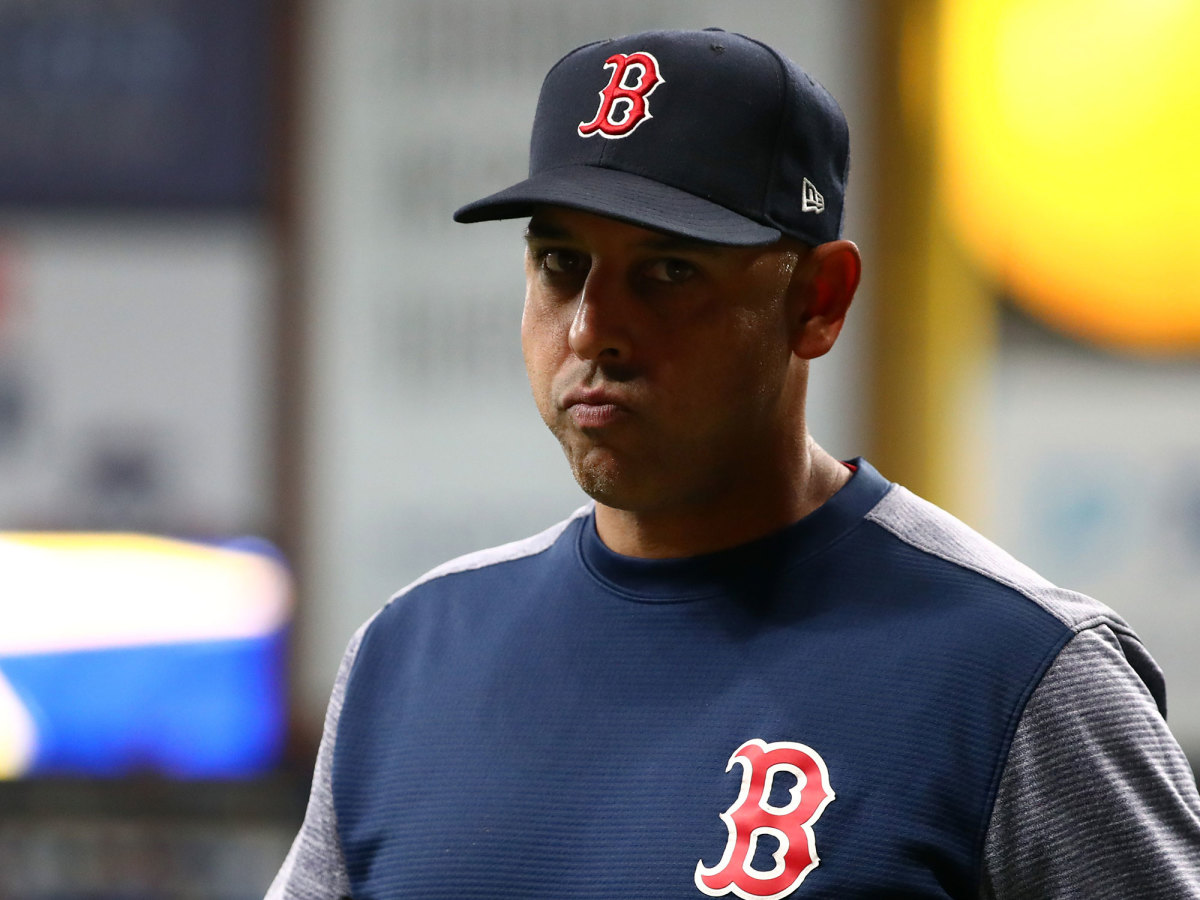Sign Stealing and the Unintended Consequences of Replay

Slow motion was an accident. It was an unintended side effect of another film invention—a projector meant to cut back on flickering, created by an Austrian priest-slash-physicist named August Musger in 1904. Which makes for a suitable statement about the replay review that slow motion has allowed for all these decades later: Replay does what it’s meant to do, but it’s created a set of side effects that are just as notable as the institution of video review itself.
For MLB—which became the last of the four major professional sports to include replay review in 2008, and introduced its current challenging system in 2014—these side effects have been varied. The most obvious one is the increase in the number of ways to be wrong. A runner can be off the bag for an imperceptible fraction of a second. An angle can be clear and real and valid but not definitive. There’s also the cost of time: awkward waits, dead seconds and room to argue about pace-of-play problems (even though the average review took 80 seconds in 2019). And, of course, there are video replay rooms. There is each club’s group of employees who scrutinize film to gain any potential advantage in an environment that, until relatively recently, had no supervision or specific rules governing this behavior. Shockingly, that has had its own set of side effects.
The Athletic’s bombshell story about the Red Sox details how the team used its replay room to break down opponents' signs and illegally share the information with players back in 2018, after the league had finally tried to crack down on teams using replay rooms for sign stealing. This is bad for the Red Sox, of course. But it’s perhaps just as much so for MLB, in that it’s now clear that it allowed an environment where this behavior could exist and took years to try and curb it.
Baseball has spent the duration of its organized existence steering around tension between sign stealing (fine) and sign stealing with external equipment (not fine). That has involved binoculars, telescopes, telegraph wires, and Apple Watches, to name just a few. Within that history, MLB has tried to shrink the gray area between ordinary gamesmanship and out-and-out cheating. But teams are liable to find the gray area and stretch it so that they can live inside it. This does not mean that doing so is right, or fair, or ethical; it is most often none of these. It does mean that MLB’s failure to preemptively guard against replay-room sign stealing was generous at best and naive at worst.

From the institution of the current review system in 2014 until MLB’s first memo on the subject September 2017, there was no formal language from the league about replay rooms’ potential for sign stealing. Until October 2018, there was no move to monitor these hubs of "innovation." In a game that has had to try to protect against far more rudimentary technology for sign stealing (hello, binoculars), clubs were trusted to establish a team of people to comb over live video for any possible edge without paying explicit attention to the one piece of information that clubs have tried to pick up from opponents for more than a century. Think about that.
This does not absolve the Red Sox (or any other team) of responsibility; “just because you can doesn’t mean you should” holds as true in baseball as it does in dinosaur re-creation. But it’s possible to note simultaneously that this behavior was wrong, that teams should have known this even without league memoranda explicitly saying that it was wrong, and that the league should have established these rules when it introduced the current replay system.
It’s possible, too, to note that this is in conversation with the other side-effects of video review. If replay is an opportunity to briefly crack open the game to affirm that all is good, then, naturally, those cracks can fill with other stuff—with uncomfortable questions and dead time and, now, sign stealing. Any serious move to make a difference now will likely make a difference to the game itself. As Tom Verducci reported yesterday, MLB is considering several potential paths here; one calls for more technology (to transmit catcher’s signs to the pitcher) and one calls for less (to shut down video rooms after the first pitch and allow for only the replay monitor). But they have to do something: MLB has tried doing nothing. It’s too late for that.
